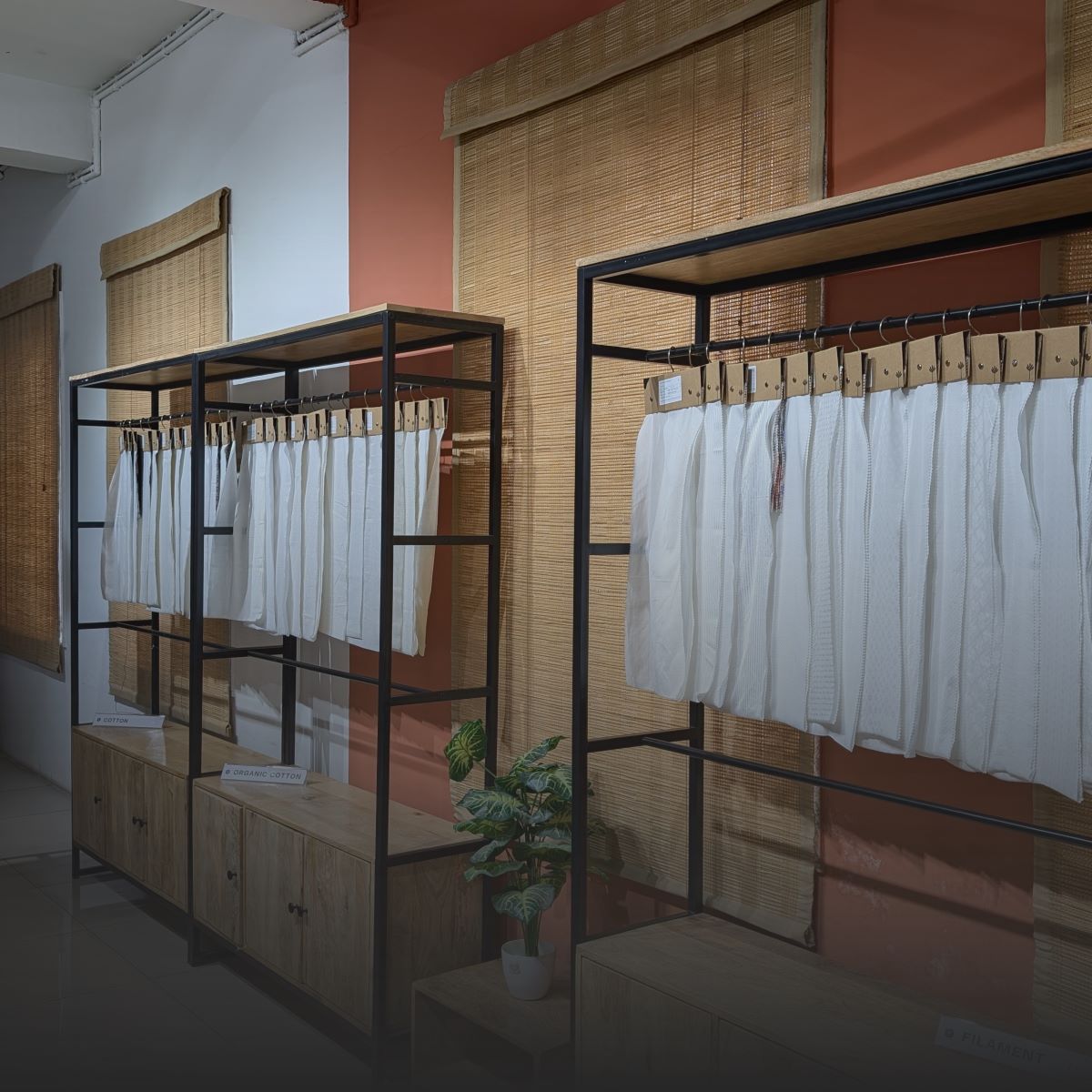Fashion startups are not waiting. They enter the market with bold ideas and expect suppliers to keep up. Many are launching collections with small teams and tight timelines. What they need most is a partner who can simplify production without cutting corners.
For garment manufacturers, this creates a clear opportunity. Startups are not looking for volume. They are looking for value. They want flexible quantities, clear pricing, fast samples and a partner who understands fabric as well as construction.
If your business offers both fabric sourcing and garment manufacturing, you already meet a critical need. But meeting a need is not enough. You also need to show that you understand how these new businesses think, what slows them down and what builds their trust.
This blog outlines specific ways to position your garment manufacturing business for startup clients. Each section focuses on what they care about most and how you can align your services to meet those needs with clarity and consistency.
Also Read: 2025 Fashion Sourcing Trends That Will Shape The Garment Industry
Understand What Fashion Startups Look for in a Manufacturing Partner

Fashion startups move fast, but they do not move blindly. Every decision is measured. Most founders are managing product development while building a brand. They need support that feels structured and simple, not overwhelming or vague.
These brands are not comparing factories by capacity. They are comparing experiences. They want to know who can help them take an idea and turn it into a finished product without unnecessary steps. If they feel unsure about the process, they often move on.
What they care about is practical:
- Small batch options that match early production goals
- Fast sampling to test the fit, fabric or print
- Access to sustainable and specialty fabrics in one place
- A clear path from design file to final piece
- Custom elements like labels and trims that support their brand story
- Reliable communication across every stage of the order
Your ability to meet these expectations earns attention. But your ability to explain them clearly earns trust. The more direct and structured your process feels, the more confident they become about choosing you.
Use Your Website to Build Trust and Drive Inquiries

Startups begin their search online. Before they speak to anyone, they scan websites. They want quick answers. If your site is confusing, incomplete or outdated, they move on without asking questions. A website that reflects how you work can build trust before you ever reply to an inquiry.
Clarity comes first. Startups are not looking for industry terms or vague promises. They want to know what you offer, how the process works and what makes you different from others. If you provide fabric and stitching together, say so. If you support small batch production, explain what that looks like.
Your website should include:
- A full list of fabric options with sampling and swatch details
- A breakdown of your garment manufacturing services
- Clear information on minimums, lead times and support
- A visual catalog or portfolio showing actual work
- A simple form to request swatches, samples or quotes
- Contact details that lead to a real response, not a delay
If a startup finds what they need without guessing, they are more likely to reach out. Your website should feel like an extension of how you work—structured, reliable and easy to follow.
Be Visible Where Fashion Startups Spend Time

Most fashion startups already know what they want. They collect references, save supplier profiles and search for solutions long before they send an inquiry. If your business is not showing up where these searches begin, you are not in the running.
Visibility is not only about reach. It is about context. Startups use digital platforms to explore what others are doing, compare sourcing options and understand what to expect from a manufacturer. They are not drawn to companies that feel distant or difficult to understand. They want to see real examples, clear processes and a point of view that fits how they work.
You do not need to be everywhere. You need to be present where your audience already spends time. That includes:
- Instagram feeds filled with fabric textures, production videos and printed samples
- LinkedIn pages that speak to production quality, not marketing buzzwords
- Pinterest boards where founders plan collections and gather supplier references
- Startup-focused platforms that connect brands with manufacturers
- School-led or community-based incubators that guide new designers
Showing up is not enough. What matters is how you present yourself once they find you. If your voice and process feel real, they will keep looking at your work and start thinking about how to work with you.
Position Your Offering as Startup-Friendly

Fashion startups do not expect everything to be perfect. They expect everything to be clear. If your offering is built for flexibility but hard to understand, they will miss the value. To connect with this audience, the way you explain your services matters as much as the services themselves.
Startups do not only compare costs. They compare the experience. If your catalog is easy to browse, if your process is easy to follow and if your terms are written for people starting out, your offer becomes more relevant. Every feature you present should solve a specific problem they are likely to face.
Make your offering easier to engage with by showing:
- A step-by-step breakdown from sample to final piece
- Fabric options that include swatching and small yardage
- Clear information on minimums, lead times and repeat orders
- Add-ons like labels, trims and packing options save them time
- Access to design support or ready-to-use prints for faster decisions
The goal is not to promise everything. The goal is to help them get started. When your process feels built around how it works, they are more likely to trust that it will work for them.
Simplify the Inquiry Process for Faster Conversions

Startups do not need another form. They need a starting point that feels simple and clear. Most of them are reaching out for the first time. If the process feels confusing or open-ended, they often stop before they begin.
The first step should not ask for everything. It should give enough structure to help them move forward with confidence. When a startup visits your site, they want to know where to click, what to share and what happens next. If your process explains that in a few direct steps, it becomes easier to complete.
A helpful inquiry process often includes:
- A short, focused form with room to attach design ideas or tech packs
- A clear message about what happens after the form is submitted
- A list of next steps that include timelines, samples and review calls
- Contact details that lead to real support, not automated replies
- Links to fabric options or service pages that guide early questions
You do not need to build a complex system. You need to give structure to the first interaction. That structure helps startups feel like they are working with someone who understands how to get things done.
Educate to Convert: Share Practical Content for Startups

Startups do not always know what to ask. Many are entering the world of production for the first time. If you can answer their questions before they ask, you become a more valuable partner. Information builds trust. When that information is useful and specific, it also builds momentum.
Publishing content is not about promoting your services. It is about helping startups understand what to expect. A guide that explains how to prepare a tech pack, a page that outlines sampling timelines or a simple post about common production mistakes can save your client hours. It also shows that you understand what they are going through.
Helpful content may include:
- Step-by-step guides on how to prepare for garment production
- Explanations of fabric types, printing options and finishing techniques
- Answers to common questions about minimums, timelines and sampling
- Examples of past work that show what is possible with low-volume orders
- Visuals or templates that help new brands stay organized
Startups respect businesses that teach without selling. When your content helps them feel prepared, they are more likely to reach out. Clear information gives them the confidence to take the next step with you.
Also Read: Best Garment Manufacturers in Asia 2025
Conclusion

Startups are not searching for factories. They are searching for partners. They want to work with people who make the production process easier to understand and easier to manage. If your business can offer that, you are already ahead.
A strong offer is not enough by itself. What matters is how clearly it is explained, how easily it is accessed and how well it matches the way startups work. From fabric sourcing to final stitching, every part of your process should feel intentional and supportive.
Each step you take to simplify your message builds trust. Each page, post or call that brings clarity adds value. If you meet startups with structure, flexibility and real guidance, they will remember your business when it matters most.
This is not about changing your service. It is about making it easier for the right clients to see how your service fits their path forward.
Also Read: Why Global Fashion Brands Are Choosing India for Garment Manufacturing
FAQs
What order size works for most startups?
Most startups launch with small batches. A flexible MOQ starting at 50 pieces per size makes it easier for them to test the product and manage costs. It also shows that your process is built for early-stage growth.
Do startups expect swatches or samples before production?
Yes. Swatches help with fabric selection and samples help confirm fit and construction. When both are available, it gives structure to the decision process and makes approval faster.
Can I work with startups that do not have a tech pack?
Yes, if there is support. Many startups come with moodboards or sketches. A clear intake process can help them move from idea to production, even without full documentation.
Where do startups search for manufacturing partners?
They often search on Instagram, LinkedIn, Pinterest and startup sourcing platforms. Some come through design schools or founder communities. Being present in these places helps them find you early.
We also happen to be a magnet for suggestions, and would love to catch yours….throw us yours on hello@fabriclore.com




